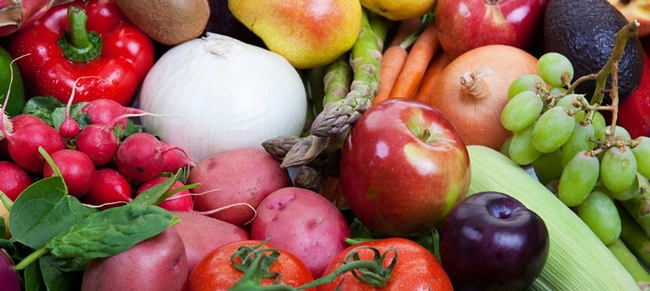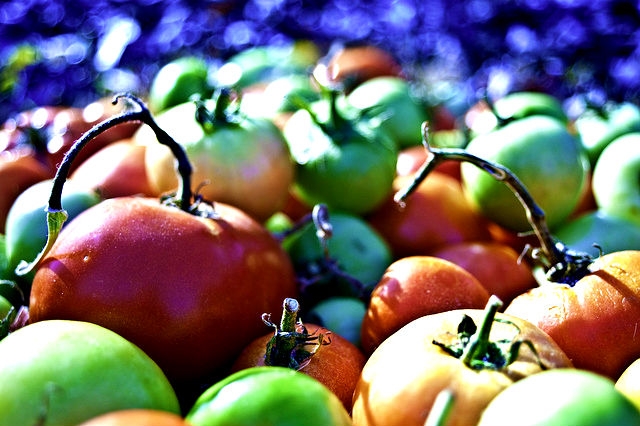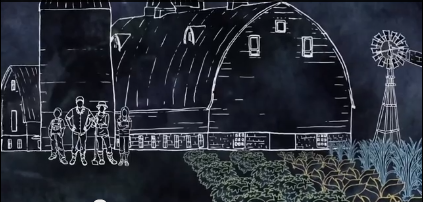Food 2025 blog
Dr. Margaret Mellon -- My views on GMOs are more nuanced
The following is a response from Dr. Margaret Mellon, a participant in the Boston Review Magazine Forum that was mentioned here.
As a participant in the Boston Review Magazine forum, I take issue with the sweeping statement that all of the participants agreed that the GE crops currently on the market are safe to eat and safe for the environment. My views on both topics are more nuanced.
I agree that GE products currently on the market--overwhelmingly herbicide tolerant (HT) and BT crops--are unlikely to be allergenic or toxic and on that basis are likely safe to consume. But I also believe that there are holes in the risk assessment process that leave some questions unanswered. This month’s issue of Nature Biotechnology has an excellent feature discussing the challenges of food safety testing.
Moreover, it is important to note that each GE product must be individually assessed for food safety and that the safety status of the HTC and BT crops says little about foods that might be introduced in the future. For example, serious attention needs to be paid to the possibility that GE products produced by gene silencing might inadvertently turn off non-target genes in people who consume them.
I disagree strongly with the statement that the BT and HT crops are safe for the environment. Yes, scientists have documented pesticide reductions in pesticide use immediately following the introduction of these crops, which I welcome and applaud. But these benefits exist only until resistance develops to glyphosate or the BT toxins.
Glyphosate-resistant weeds have already arisen across the US and are leading to enormous increases in pesticide use, reversing the early reductions attributable to the HT crops. The biotechnology industry’s response is a new generation of transgenic crops that enable the use of older, more herbicides like 2,4 D and dicamba. Unless U.S. agriculture responds swiftly, we will soon be facing a nightmare scenario of increased pesticide use resulting from resistant weeds. This is not an example of an environmentally beneficial technology.
BT has proven much more durable, in part because strong regulations allowed the government to impose refuge requirements on U.S. farmers. But resistance has already arisen in corn root worms in the Midwest and is leading to increased chemical insecticide use.
Dr. Margaret Mellon
Senior Scientist, Food & Environment Program
Union of Concerned Scientists
Scientific America: Buddhist Economics and A GMO rethink
Reposted from Scientific America -- Food Matters Blog
Discussions about plant genetic engineering often reflect two starkly opposing narratives. On the one side are the angry mobs who invade research farms to destroy fragile green rice seedlings deemed “GMOs”. On the other, are the scientists who call for calm and respect for publicly funded research. Too often, it seems, there is little mutual understanding.
In a forum on September 5 hosted by the Boston Review Magazine, a group of journalists, activists, plant biologists, and farmers as well as academic experts in food security, international agricultural and environmental policy sat around a virtual table to find common ground. All accepted the broad scientific consensus that the process of GE does not pose inherent risks compared to conventional approaches of genetic alteration and that the GE crops currently on the market are safe to eat and safe for the environment. That agreement allowed the discussion to move forward to a more societally relevant issue- the use of appropriate technology in agriculture....
...What criteria can scientists, farmers and consumers use to assess which type of these genetic technologies is most appropriate for agriculture?
In his 1973 book Small is Beautiful, economist E. F. Schumacher states that an appropriate technology should be low cost, low maintenance and promote values such as health, beauty, and permanence. Environmentalist Stewart Brand used a similar framework to select new technologies for inclusion in his 1969 Whole Earth Catalog. One of the purposes of the Whole Earth catalog was to facilitate a creative or self-sustainable lifestyle.
We can apply Brand and Schumacher’s Buddhist economic criteria to evaluate modern agricultural technologies....
...Golden Rice is an excellent example of how a particular genetic technology can appropriately serve a specific societal purpose – in this case, enhancing the health and well-being of farmers and their families. It is a relatively simple technology that scientists in most countries, including many developing countries, have perfected. The product, a seed, requires no extra maintenance or additional farming skills. The seed can be propagated on the farm each season at no extra cost through self-pollination and improved along the way.
Can we conclude from the example of Golden Rice that all GE seeds fall into the category of appropriate technology? Unfortunately it is not that simple. Each agricultural technology must be evaluated on a case-by-case basis. It is not informative to group all “GMOs” together without regard to the purpose of the engineering, the needs of the farmer, or the social, environmental, economic, or nutritional benefits.
Wildfires and Climate Change
Reposted from The New York Times
(Yosemite fire)
Increasing incursions by humans into forests, coupled with altered forest ecology and climate change, will make fires bigger and more destructive, with implications for air quality as well as homes and infrastructure.
“We face the increased risk of fires almost everywhere,” said Chris Field, director of the department of global ecology at the Carnegie Institution for Science, who is co-chairman of a working group for the Intergovernmental Panel on Climate Change.
Next March, the working group of which Dr. Field is co-chairman at the Intergovernmental Panel on Climate Change, the U.N. group, will publish a report that discusses wildfires as part of a broader look at the effects of climate change and the vulnerabilities of certain areas.
When large fires burn, they can have serious international consequences. In a sense, Dr. Field said, they are a “teachable moment,” showing the risks of climate change.
Sacramento Region's AgStart Combines Technology & Agriculture
Reposted from California Economic Summit
Have you ever planted a seed, be it a plant, fruit or flower, and watched it grow? Patience is the key to seeing that seed sprout and reach its full potential.
In this case, the Sacramento Regional Technology Alliance (SARTA) has planted the seed with its newest industry-cluster focused program called AgStart, combining the strength of California's tech and agriculture sectors.
Thanks to an i6 Challenge grant from the US Economic Development Administration (EDA), SARTA and UC Davis are working together to support, identify, invigorate and accelerate agriculture technology companies and entrepreneurs.
"Currently there is a huge, and growing, need for agriculture technology to increase productivity and yield, improve cost effectiveness, and enhance the efficient use of resources such as water, energy, and land,” said Meg Arnold, SARTA CEO. “Ag technologies can, among other things, turn farm waste into energy, improve the drought tolerance of crops, increase food safety, provide for integrated pest management, drive the efficient use of water, and so much more.”
AgStart covers an area of 11 counties around Sacramento from Kern to San Joaquin and Stanislaus Counties.
The plan for the first year will be to:
• Develop and maintain the first map of the region's ag tech companies. -- They’re already over halfway to their goal of identifying 120 tech companies by the end of the year.
• Host a PitchFest, a competition to highlight successful ag tech companies -- Finals are Thursday, September 19
• Represent the region at the prestigious Ag Innovation Showcase in Missouri, the largest ag tech showcase in the world.
• Bring the ag innovation sector to SARTA's long-standing CleanStart Showcase in October.
"We are working with ag tech companies in their research and development,” said Dough Kohl, Program Director, AgStart. “We are making leadership series available, we are seeing where we can help introduce them to investors, as well as others in the ag tech industry who they might partner with and guiding them along the way to bring them to that next level.”
To read the rest of the story...
Can sustainable agriculture feed the world?
We've all heard the argument that organic agriculture cannot feed the world. But as we've seen with the high number of both starving and obese individuals in the world, our current system isn't working either.
If organic agriculture isn't the answer, what about practices close to organic agriculture? What about sustainable agriculture? Can sustainable agriculture feed the world? According to Mark Bittman of the New York Times, it certainly can.
According to Bittman, "Anyone who opens his or her eyes sees a natural world so threatened by industrial agriculture that it’s tempting to drop off the grid and raise a few chickens." But sustainable agriculture practices, such as agro-ecology, immediately help support small farmers in less expensive and more productive ways, and make the system less susceptible to climate shocks.
Even the World Bank supports a shift to more sustainable agricultural practices. Their International Assessment of Agricultural Knowledge, Science and Technology for Development Report, calls on sustainable practices as a solution to poverty, food security, malnutrition and poor health, environmental degradation, and more.
Anna Lappe, author and food activist, also argues in favor of sustainable agriculture as a means to feeding our growing population. Her short video "Can Sustainable Agriculture Feed the World" markets itself as a myth-buster against large-scale industrial agriculture.
What do you think? Can we feed the world with sustainable agriculture alone?








